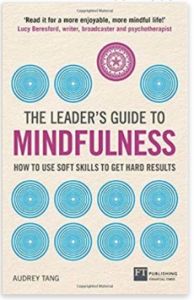Join getAbstract to access the summary!

Join getAbstract to access the summary!
Audrey Tang
The Leader’s Guide to Mindfulness
How to Use Soft Skills to Get Hard Results
FT Publishing, 2018
What's inside?
Most people know just a little about mindfulness, yet business leaders recognize its career benefits.
Recommendation
Most people know just a little about mindfulness, yet business leaders recognize its career impact and workplace benefits. As psychologist Audrey Tang reports, a Mindfulness Initiative study found that users said mindful practices made them feel positive, focused and resilient. Mindfulness can help you be more conscious of your prejudices, goals and values. It can also strengthen your leadership skills. Tang describes how mindfulness leads to better decision making: It helps you set priorities and distinguish between important information and mere noise. In considering the practical aspects of mindfulness, Tang discusses using mindful practices to support collaboration, resilience, creativity, “emotional agility” and confidence. Her comprehensive introduction to mindfulness shows readers how to use it, step by step. Tang encourages those who wish to deepen their leadership skills to add mindfulness to their methods.
Summary
About the Author
Chartered psychologist Audrey Tang founded CLICK Training and is the resident psychologist on the Chrissy B. Show, a British program devoted to mental health. Some of the research she cites is available at Mindful.org.
























Comment on this summary